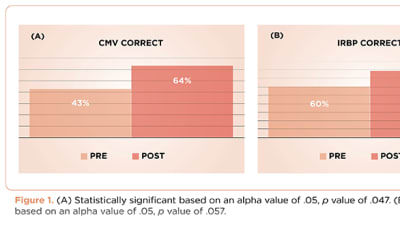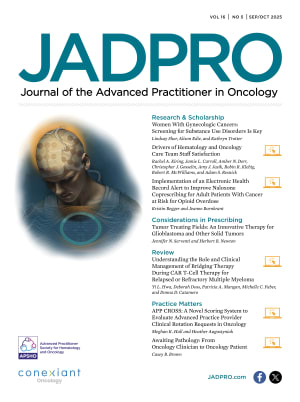
Volume 16, Number 4 (Jul/Aug 2025)
In outpatient oncology settings, the implementation of a transfusion algorithm improved the appropriate use of cytomegalovirus-negative and irradiated blood products, enhancing patient safety. Also in this issue, Beaton and colleagues report on APSHO’s efforts to prioritize job satisfaction and retention by employing a structured approach to advocate for and implement administrative time for APs.
In the online first section, Braun-Inglis and colleagues report on efforts to enhance diversity and clinical trials accrual through the creation of an AP mentorship and paired research coordinator program. Community oncology teams describe how they are managing cytokine release syndrome associated with bispecific T-cell–engaging antibodies. A primer on plain language summaries (PLS) demonstrates how these tools can aid APs in translating complex research into language that patients can understand and act upon. For patients with the rare hematologic malignancy blastic plasmacytoid dendritic cell neoplasm (BPDCN), practitioners offer real-world insights into optimizing care with tagraxofusp, the only FDA-approved treatment. Another article reviews imetelstat, a telomerase inhibitor approved for anemia in lower-risk myelodysplastic syndromes.









